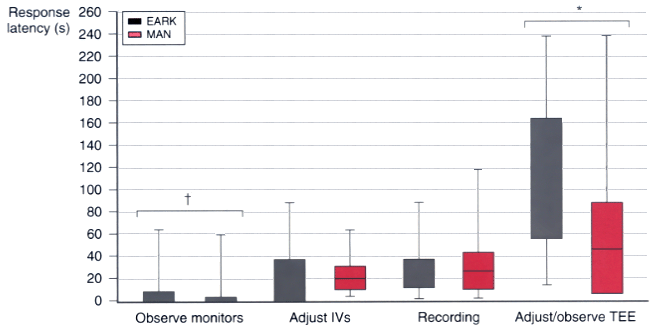 |
 |
Figure 83-9
Vigilance test data during anesthetic tasks with and
without automated record-keeping. The range of data is shown for each of four taskcategories
in electronic automated record-keeping (EARK) and manual record-keeping (MAN). Each
box contains 50% of the data for that subgroup (upper limit of box is the 75th percentile;
lower limit is the 25th percentile), whereas the maximum and minimum are shown by
the upper and lower horizontal bars. The response latency during record-keeping
was not significantly different between EARK and MAN. In both record-keeping groups,
subjects had significantly slower responses when observing or adjusting the transesophageal
echocardiogram (TEE), compared with recording, observing monitors, or adjusting intravenous
lines (IVs). Subjects in both groups had faster response latency when observing
the monitoring array, which contained a red light, compared with the other three
tasks. *, P < .05; †, P
< .05. (From Weinger MB, Herdon OW, Gaba DM: The effect of electronic
record keeping and transesophageal echocardiography on task distribution, workload,
and vigilance during cardiac anesthesia. Anesthesiology 87:144–145, 1997.)

 |
